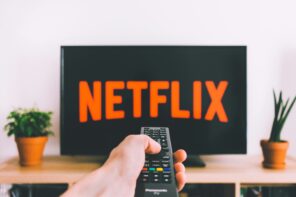Growing up, Sesame Street was an integral part of my childhood. I had an Elmo doll that I carried with me wherever I went. I would read The Monster at the End of This Book over and over again, and never grow tired of the ending. The lovable Big Bird, Count von Count, and Cookie Monster taught me lessons about kindness, numbers, and the key elements of a balanced diet. The show accompanied me as I became increasingly aware of my place in this world. I may not have realized it at the time, but all the fun little songs and games were valuable in helping me become a better person. Sesame Street is an excellent educational tool, but with a new deal regarding streaming rights, the accessibility of the show may become a lot more complicated.
This beloved childhood favourite has been on the air for 50 years and shows no sign of stopping any time soon. While there have been slight stylistic changes and character additions throughout its airing history, the heart of this show has remained constant. The show’s demographic has always been low-income families who are unable to access children’s television programs that are part of premium packages.
[T]he accessibility of the show may become a lot more complicated.
Sesame Street’s target audience is pre-schoolers going through a crucial stage where essential skills such as reading, writing, and arithmetic are starting to develop, and they need all the support that they can get. Parents who are part of underprivileged socioeconomic backgrounds don’t always have the time or the energy to help in the development of these important skills. This is why shows like Sesame Street can really help in providing the supplemental support that is required to help children thrive. A study conducted by researchers from the University of Maryland found that children who watched Sesame Street performed better in schools, saying that “Sesame Street is one of the largest and most affordable early childhood interventions ever to take place.”
While Sesame Street‘s home has always been PBS, a new streaming service— HBO Max — has recently gained exclusive access to new Sesame Street content. This $20-a-month service will air new episodes on their platform first, and PBS will only be able to air said episodes nine months after their initial release. In the meantime, they will continue to air reruns. At first glance, this doesn’t seem to be such a big problem, as there will still be content airing on PBS, which will remain accessible to underprivileged children. However, while some content is timeless, this show also features discussions of relevant social issues.
By making Sesame Street less accessible, HBO Max is limiting access for the children who need this show the most.
A recent example of this is the introduction of a character whose mom is suffering from opioid addiction. The discussion of this topic was done in a tactful way that didn’t undermine the seriousness of the issue while also approaching it in a way that was palatable for young children. Sesame Street has always discussed tough issues while featuring a diverse cast of characters. A lot of the media children consume often only depict one type of narrative, but Sesame Street shows all sorts of situations and helps children feel seen. Seeing these difficult issues broken down to simpler terms can aid kids in understanding what they’re going through. By making Sesame Street less accessible, HBO Max is limiting access for the children who need this show the most.
There’s no way of predicting what the HBO Max deal will mean for the future of Sesame Street. but the minute restrictions are placed on universally accessible forms of media, a dangerous slippery slope is created. My only hope is that future generations of children of all backgrounds will be able to enjoy and learn from Sesame Street in the same way I did.








